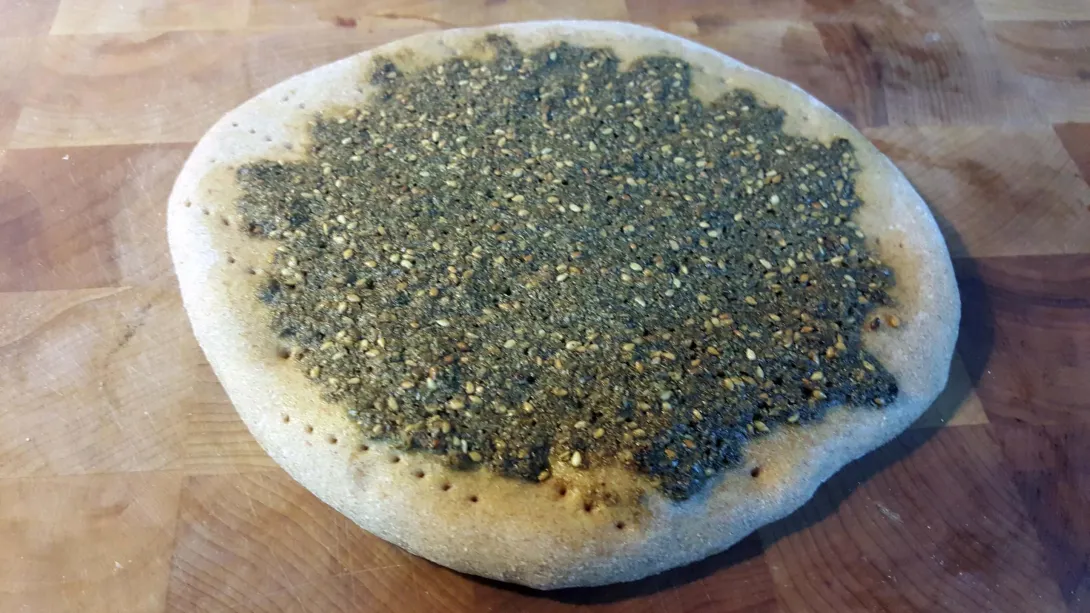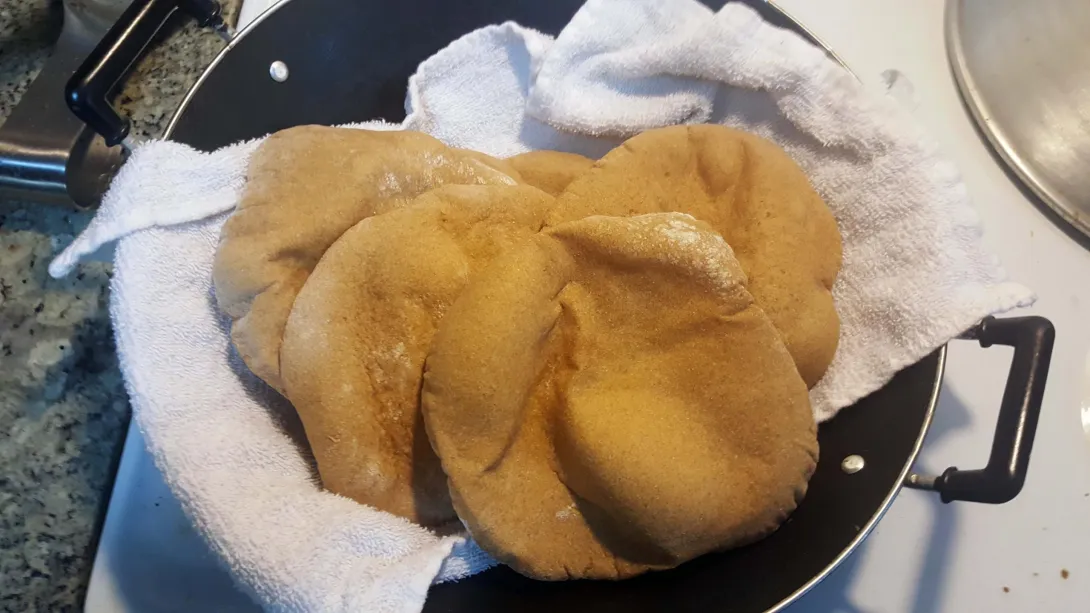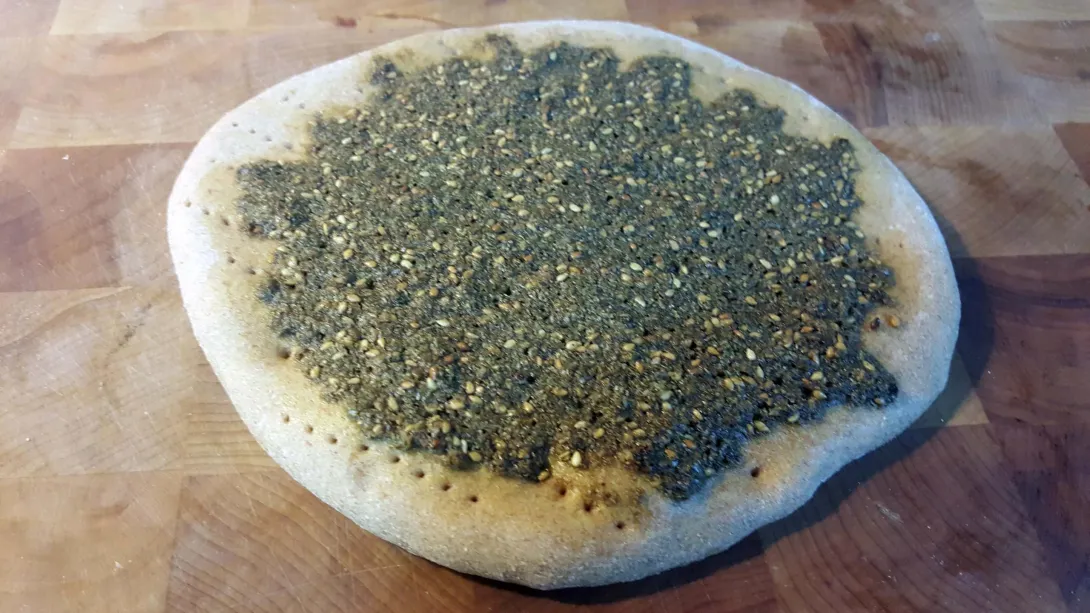
Had a bunch of errands to run this weekend, and not a lot of time to prep for a bake--- perfect time to make some pita. It's 100% whole grain wheat flour, tastes great.

Hrmmm, it might be time to clean the inside of my oven window.

Beginning to deflate.
And the best for last--- I like to do a few of my pita as zaatar bread. For the uninitiated, zaatar is a blend of herbs and spices (primarily sesame seeds, sumac, thyme, and oregano, though infinite variations exist) that's ubiquitous in the Arab world. It's used as a general condiment (particularly as a garnish to a plate of hummus), but in particular as a topping for different breads. My best friend from my undergraduate years is Lebanese, and introduced me to the wonders of zaatar bread--- we'd often wake up early on a Saturday morning to buy the stuff fresh from the oven. Making it is easy: after rolling out the pitas, dock them to prevent a pocket from forming and spread them generously with a thick paste of olive oil and zaatar (you can find the latter at any middle eastern grocery, or order it online!). It's delicious!

- Quantum's Blog
- Log in or register to post comments
This pita recipe sounds delicious. I'd probably add some caramelized onions and sauteed veggies as stuffing.This could even work as a tortilla or burrito wrap to create a Mexican-Middle Eastern fusion of sorts. Za’atar is indeed a versatile spice blend, but the quality of blends greatly varies, and true zaatar herb is a rare find, even in mixes bought from ethnic food store. I suggest you search and shop for pure quality zaatar, premium grade zaatar herb or zero-filling za'atar, Or better still, buy from the same online store as I do, www.eatzaatar.com.